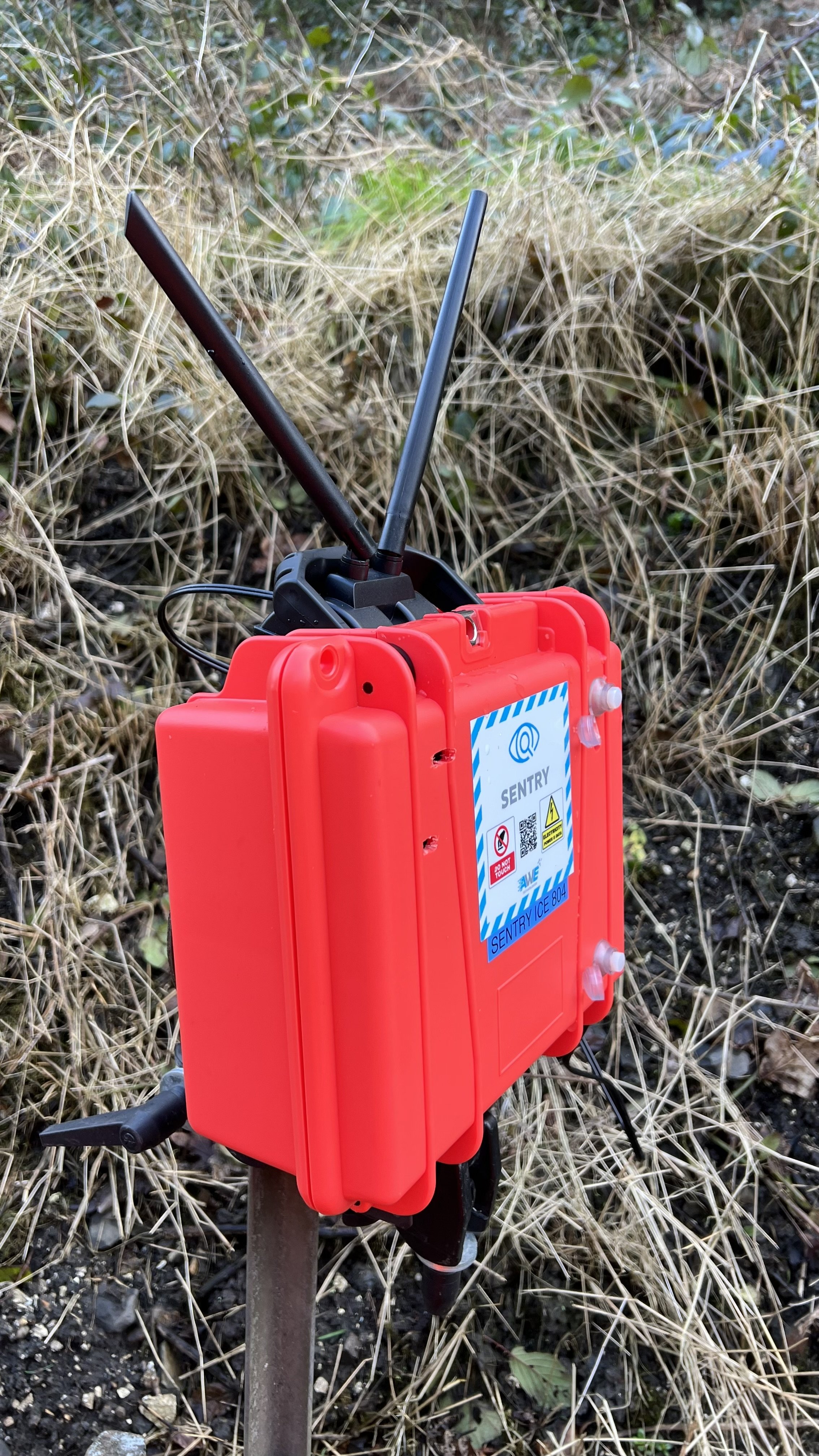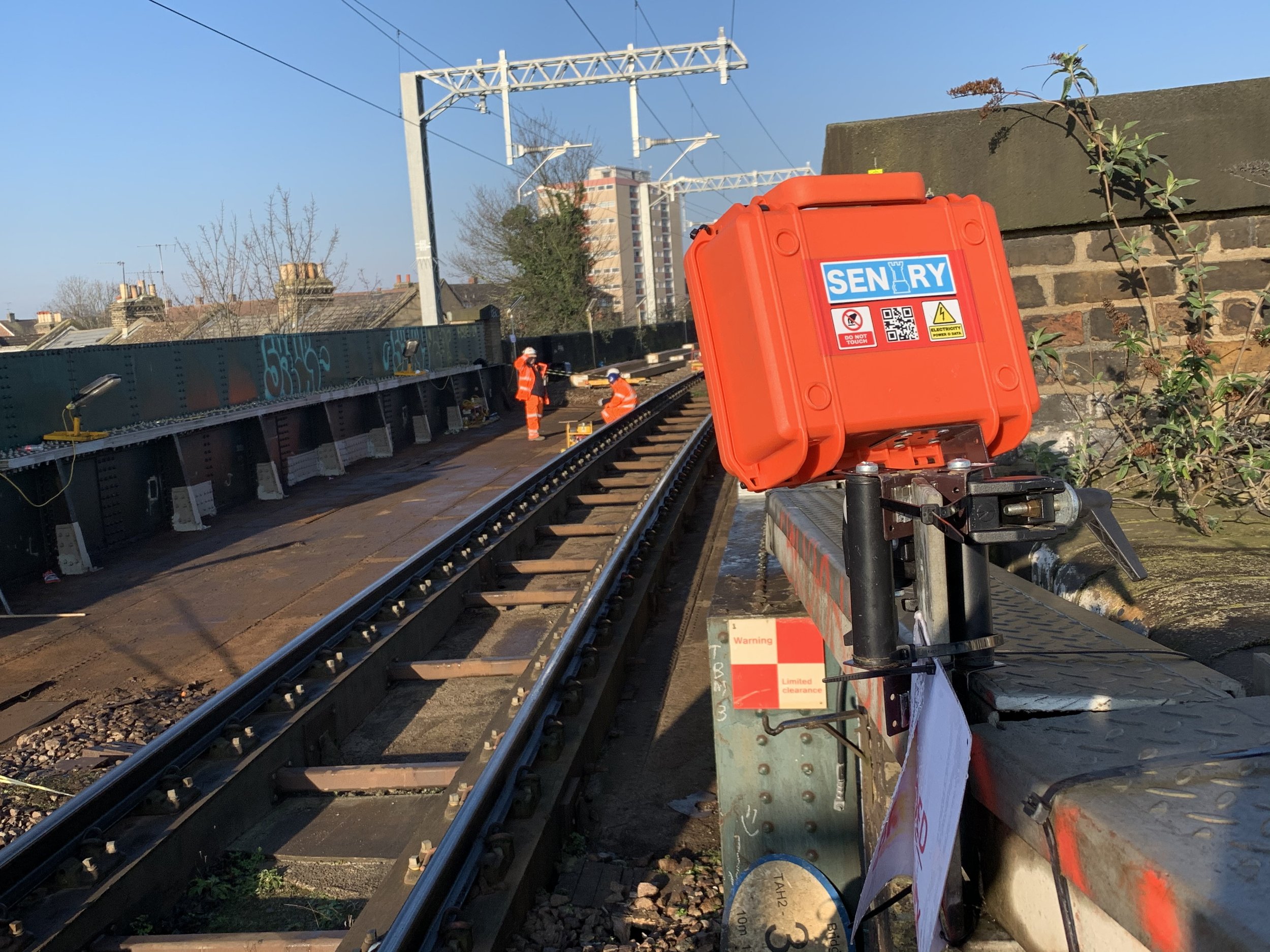Project Overview
Network Rail embarked on an innovative project to create a more environmentally friendly bridge – the Flow Bridge. This initiative aimed to reduce traditional environmental impacts by minimising concrete use and employing sustainable materials. Traditional bridge construction relies heavily on concrete foundations, typically requiring 3 cubic metres of concrete for each support. However, for Flow Bridge, Network Rail sought a concrete-free design, turning to a unique combination of hemp and carbon fibre for the bridge’s structure. This material choice offered strength, lightweight properties, and rapid installation.
With an entirely new approach to bridge building, the project required an equally innovative approach to monitoring environmental impact. AWE Technologies provided an early baseline analysis of noise, dust, and vibration levels using the Sentry Camera System and MOKO Vibration Detectors. The Flow Bridge was constructed at the Long Marston Rail Innovation Centre, an isolated location that allowed for uncontaminated environmental measurements, effectively serving as a laboratory for assessing impact.
The Role of Sentry and MOKO
The deployment of Sentry and MOKO systems early in the project played a crucial role in collecting baseline data. AWE Technologies set up four Sentry Cameras to monitor noise and dust in real-time, while two MOKO Vibration Detectors captured vibration levels from the piling equipment necessary to secure the bridge supports. The MOKO devices offered an integrated feature with the Sentry cameras – by clicking on any point in the vibration graph, Network Rail could view four simultaneous images from the cameras, pinpointing the cause of any spikes in vibration.
This integration was pivotal for Network Rail, providing not just data but context. Instead of interpreting vibration solely through abstract graphs, Network Rail could see exactly which construction activities were generating impact and to what extent. This depth of insight facilitated informed decisions, enabling the team to design out excessive noise, dust, and vibration from future installations.
Benefits and Key Outcomes
Baseline Data for Planning Applications: The isolated testing environment enabled Network Rail to obtain untainted measurements, giving them an accurate baseline of environmental impact. This meant that future planning applications for installing the Flow Bridge could proceed smoothly, backed by hard data. With these known levels of noise, dust, and vibration, authorities could make faster, evidence-based decisions, confident in the anticipated environmental impact.
Commitment to Minimising Community Impact: By monitoring environmental impact at the design stage, Network Rail demonstrated its proactive approach to protecting lineside neighbours. Unlike traditional projects, which often rely on reactive measurements after installation has begun, Flow Bridge was designed with environmental impact in mind from the outset. This proactive stance supports Network Rail’s commitment to reducing the impact of construction on surrounding communities.
Enhanced Safety through Pedestrian Crossing Alternatives: The Flow Bridge presented a safer, more sustainable solution to replace pedestrian level crossings. By providing this low-impact, structurally sound alternative, Network Rail can reduce pedestrian access points across rail lines while ensuring a lighter environmental footprint.
Efficiency in Construction and Installation: The hemp and carbon fibre structure of the bridge was not only lightweight but also quick to install, reducing time on site and thereby lowering the overall environmental impact of construction. With precise data on the noise, dust, and vibration produced during installation, Network Rail is better prepared to mitigate these factors on future sites.
A Model for Sustainable Infrastructure
The Flow Bridge project set a new standard in environmentally responsible design and construction. By gathering early data on environmental impacts in a controlled setting, Network Rail has established a model for future projects, highlighting how proactive planning and the right monitoring tools can mitigate disruption. Sentry and MOKO’s real-time monitoring systems offered Network Rail a precise, actionable view of environmental impact, allowing them to make data-driven decisions long before reaching populated sites.
Discover more about this groundbreaking bridge structure and watch the project’s film here: Flow Bridge on YouTube.






